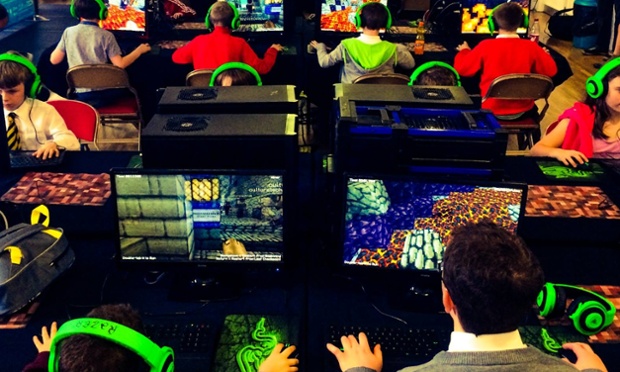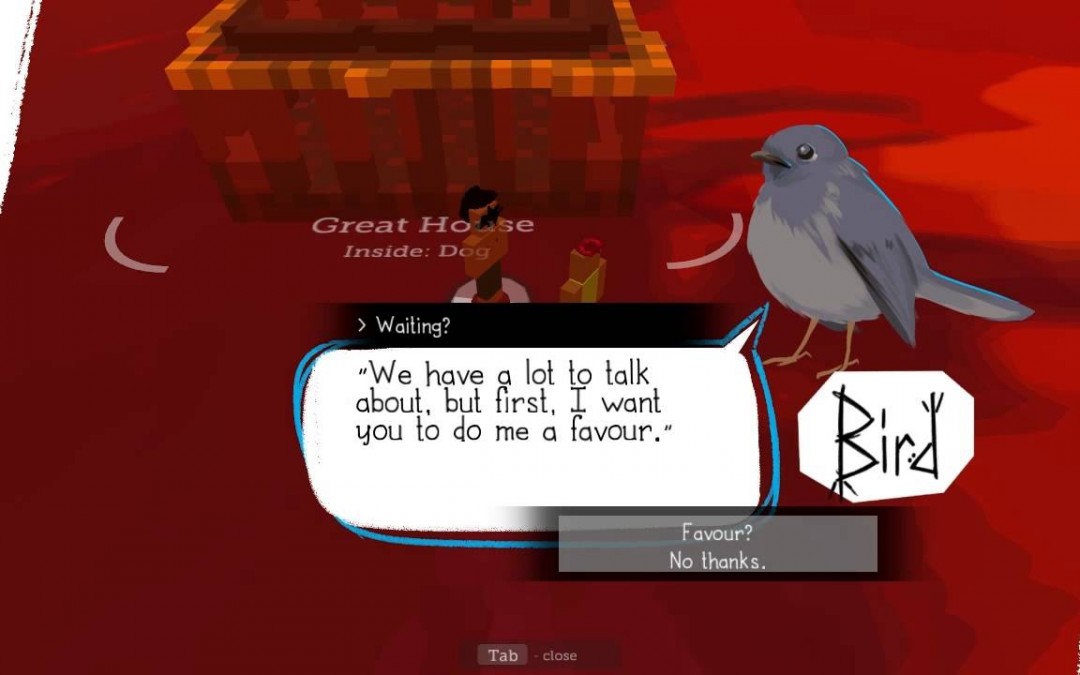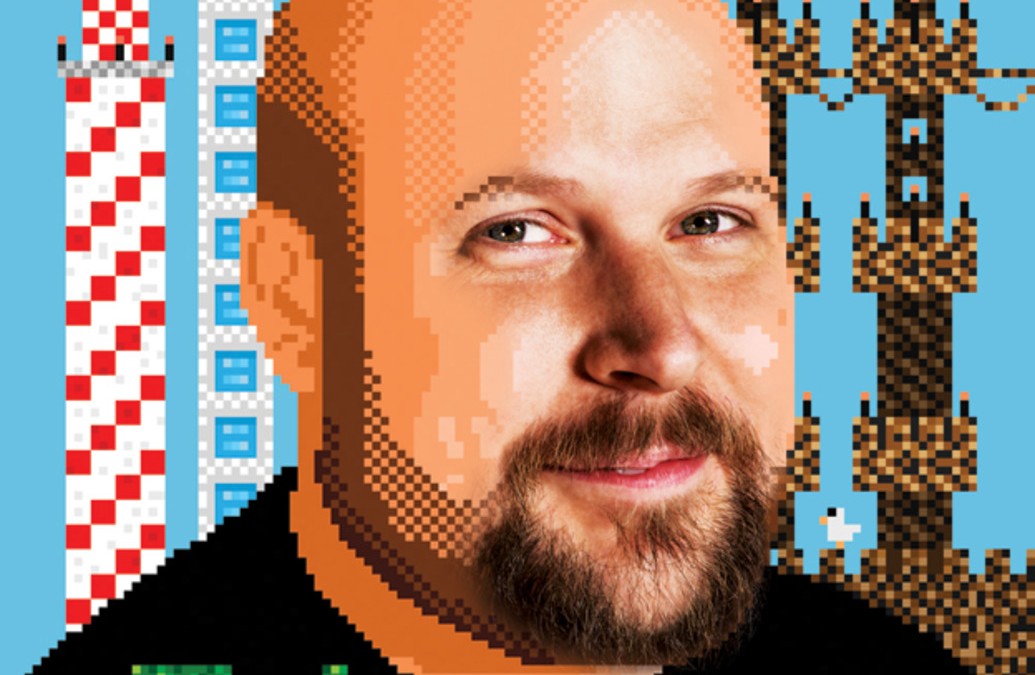
by Stone Marshall | Mar 26, 2015 | Minecraft News |
Mother leaves full-time supermarket job to make thousands as a celebrity on MINECRAFT (now even her daughters’ friends want her autograph!)
- Staci Northfield, 27, from Cambridge, left her job as a Sainsbury’s cashier
- Mum-of-two is now a Minecraft celebrity, narrating videos on YouTube
- Has 111,000 subscribers on YouTube and 34,000 followers on Twitter
- Earns the same as her partner, who is a chef at a Cambridge University
A mother has given up work to gain an international following for her making videos of the addictive block-building game Minecraft.
Staci Northfield, 27, from Cambridge, says she earns more from narrating her digital adventures on the hugely popular game than she did as a full-time supermarket cashier.
As her online alter ego, Salem’s Lady, she has amassed 111,000 subscribers on YouTube and even meets her eager fans at special conventions.
‘It’s like a double life’ – Staci has found it strange to consolidate both her real life as a parent and also her life and work as a gamer in Minecraft
The mother-of-two uses Twitter to keep in contact with her 34,000 followers and – while she won’t reveal her new earnings – says she makes almost as much as her partner Jonathan Brown, 33, who is a full-time chef at a university in Cambridge.
She said: ‘I got started when one of my friends told me it was a really great game to play. It looked really boring but she showed me a guy doing videos and he made it a bit more interesting.
‘I started off building a house, which turned into a castle, then a castle with a railway, and from then on it was; “I love this game, it’s endless”. You can build anything.
‘I never thought it would be possible playing games for a living, and now there are children who want me to sign things for them.’
Even Staci is surprised by her own success, saying: ‘I hate the sound of my own voice, and I thought they were going to hate it, but a lot of the audience are in America, and they seem to love the British accent.
Staci posts hugely popular minecraft videos as SalemsLady

‘I love this game, it’s endless’ – Former supermarket cashier, Staci, has an online alter-ego called Salem’s Lady, which she takes on adventures in the block-building video game
‘There have been a few people around from the start and I always try to make a little more effort for them but sometimes it’s hard because you can’t speak to everybody.’
Staci gave up her Sainsbury’s job to look after her two daughters Holly, six, and Rachel, eight, but struggled for money two years ago and decided to go back to work.
But while she was looking for jobs online she became hooked on the addictive block-building game so much she began making the videos.
It’s really, really strange, I have to switch off from the gaming world and be a parent again, but I can go to my children’s school and none of the parents know who I am
Despite YouTubing as a hobby she soon realised she could make some serious cash and gave up the job hunt altogether.
Staci spends two or three hours in the morning making the videos before she edits them in the afternoon and helps other players with any queries.
She spent last weekend at a gaming convention in London and has had to get used to meeting her excited fans in the flesh.
Staci added: ‘My youngest daughter just doesn’t understand it, she just likes being in the videos.
‘But my eldest loves it, her friends are fans and when she goes to school they all know who I am.
‘It’s been steadily growing over the past two years and then it’s really snowballed recently, I can’t believe it.
‘I earn enough to get by so I don’t have to go to work and can pay my bills, and if I am needing to go to school I can do that.
‘I am always available if someone needs me, it’s a real perk.
‘It’s really, really strange, I have to switch off from the gaming world and be a parent again, but I can go to my children’s school and none of the parents know who I am.
‘It’s like a double life.’
She says she earns the same as her husband Jonathan, who works full-time as a chef in a university in Cambridge
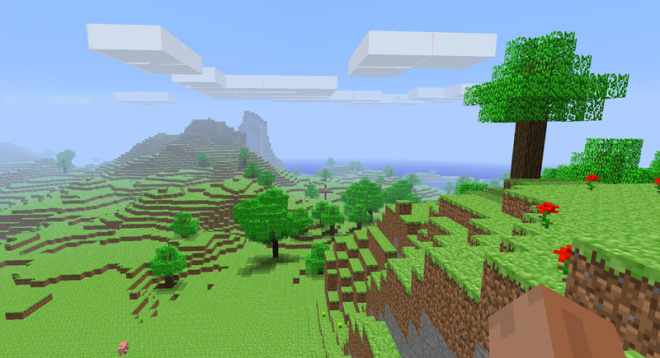
by Stone Marshall | Mar 25, 2015 | Minecraft News |
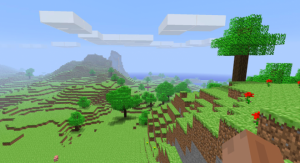 For most people, the colorful numbers and letters that filled the computer screen would be completely baffling, but Markus felt right at home. The game was called Dwarf Fortress and it had become a cult favorite in indie circles. Markus had downloaded it to try it out himself and watched, entranced by the simple text world drawn up in front of him.
For most people, the colorful numbers and letters that filled the computer screen would be completely baffling, but Markus felt right at home. The game was called Dwarf Fortress and it had become a cult favorite in indie circles. Markus had downloaded it to try it out himself and watched, entranced by the simple text world drawn up in front of him.
A couple of weeks had passed since Markus started working at Jalbum and his thoughts were circling full speed around the game he’d promised himself he’d work on. Like when he was a child and would run home from school to his LEGOs, he now spent almost all his free time in front of his home computer. He combed the Internet in search of inspiration for his project; the heavy labor—the coding—could begin only after he figured out what kind of game he wanted to create. The idea for Minecraft began to take shape in his encounter with Dwarf Fortress.
In Dwarf Fortress the player is tasked with helping a group of dwarf warriors build a fortress in bedrock. The player controls a group of dwarves that can each be put to various tasks (chopping down trees, mining ore from the mountain, cooking, making furniture, fishing, for example) or made to protect the fortress from monsters such as evil vampires, giant spiders, trolls, and wolves. The basic game mechanics are similar to many other strategy games—The Sims, for example, where the player manages a household, or the Facebook game FarmVille, where the objective is to get a farm to flourish. But Dwarf Fortress is different from most other games of the genre in a couple of ways.
First of all, the graphics are highly stylized. The Dwarf Fortress game world is completely made up of letters, numbers, and other symbols that can be typed on a regular keyboard. In this game, a terrifying giant spider is not a detailed 3-D model but a simple gray letter S. Minerals to be mined from the rock are represented by the British pound sign, beds are pale-yellow crosses, grassy meadows and trees are green dots and triangles, and so on. Small, smiling faces of different colors represent the dwarves. Many Dwarf Fortress players maintain that the simple graphics make the game more immersive—for what giant spider could possibly be scarier than the one you imagine?—but for beginners it is, to say the least, a deterrent. Just interpreting the information that’s presented on the screen demands a lot of study, and it’s not a wild guess that most people who download Dwarf Fortress give up after only a couple of minutes.
But the simple graphics are not there just to scare off all but the most devoted players. They also give the game’s developer time to focus on other things. Great game play and interesting mechanics are always more important that good-looking graphics, maintains Dwarf Fortress‘s creator, Tarn Adams. It’s also the reason he has spent several years adjusting and tweaking the balance in Dwarf Fortress and the nearly infinite number of situations that can arise from the combinations of thousands of different objects, creatures, and occurrences. For the person who takes the time to understand the game’s mysteries, it becomes a world that’s almost got a life of its own. In an interview with the New York Times, Adams tells of his surprise when he discovered that the carp he programmed into the game also turned out to be dangerous monsters with an appetite for dwarf warriors:
“We’d written them as carnivorous and roughly the same size as dwarves, so that just happened, and it was great.”
Judging by the popularity of the game—Dwarf Fortress has been downloaded more than a million times—many agree.
Secondly, Dwarf Fortress is a game that is almost completely open ended. Or rather, the game ends when the player dies, which happens often in the cruel, underground world of dwarves. Other than that, the player decides what to build and how. The game puts a bunch of happy dwarves, tools, and opportunities on the table and waves good-bye with one simple request: have fun. The rest is up to the player.
***
Markus had quit his secure job at Midasplayer to do just that. Have fun. He loved the indie scene that had sprung up in the gaming world. While it was hard for him to put his finger on exactly what it was that attracted him, he felt at home there, much more so than as a developer with one of the industry’s large, established studios, that much he knew.
Markus had hated working at two of Sweden’s most successful game companies.
His favorite online hangout was the game forum TIGSource, a meeting place for indie developers, where Markus (known as Notch in that context) quickly found a group of friends and acquaintances to talk games with. He loved the burning creativity of the indie scene, its focus on new, interesting gaming concepts rather than on elaborate graphics and expensive manuscripts. He liked that each programmer controlled his own projects entirely.
An outside observer who saw his career at this time would probably shake their head. Markus, who had dreamt of being a game developer since childhood, had had the privilege of working at two of Sweden’s most successful game companies. Avalanche developed Hollywood-like productions, with nearly unlimited budgets. Midasplayer was in the forefront of development and experimented vigorously with the new potential of the web. Still, Markus had hated them both so much that he quit. What was it that rubbed him the wrong way?
Maybe it was more than just getting free of the boss who told him what to do day in and day out. “Indie” literally means independent, that an individual can develop a game without a large company doling out commissions. Markus’s own interpretation of the concept is slightly different. He feels that indie is a matter of self-image. It’s about creating games for their own sake, where the goal isn’t to make money but to make the best game possible.
In many ways, that is a more telling definition. Except for some incredible exceptions, the gaming industry differs from other creative businesses in that the foremost game designers are seldom recognized for their work in the way famous musicians or film directors are. In the gaming world, it’s the publishers or studios that are recognized after a well-received game release, seldom the individuals. That’s because game development is, in most cases, a collective achievement. In a project with several hundred programmers, it’s almost impossible to point out just one person as the brain or the visionary behind the whole thing. In the indie scene, on the other hand, a single programmer can put together a game of his or her own and stand behind everything from the basic vision to the implementation. You could say that the indie scene, being closer to artistry than it is to systems development, has, for the first time, given the individual game developer an identity to embrace. Markus has never thought of himself as a Java programmer, graphic artist, or musician. He sees himself as a game maker, plain and simple. The indie scene was the only place where he could be just that.
While working in web development at Jalbum, Markus resigned himself to the fact that his monthly paycheck wouldn’t be coming from developing games, but it was still better to work on something else during the day in order to be able to invest his evenings and weekends in his own projects. Initially, he had seen Jalbum mostly as his ticket out of Midasplayer. Now, a couple of weeks later, he was actually enjoying it. He had developed a friendly acquaintance with Carl Manneh, the CEO. Markus recalls that his first impression of Manneh was that of a typical businessman, and though Markus wasn’t the least bit interested in business, Carl Manneh’s enthusiasm was impressive. He was young, quick thinking, and had already, at barely thirty years old, run three companies. The first one sold shoelaces, the second was a recording studio in central Stockholm. The third was Jalbum.
And he ran the company really well, in Markus’s opinion. Carl was an entrepreneurial soul with a good head for the business logic of the Internet. Besides that, he understood Markus’s ambition to develop games. He was even interested, asking questions about projects and offering some of his own thoughts. Carl stood for something completely different from what the old bosses at Midasplayer had. He encouraged Markus and made sure that he had the time and the opportunity to balance his job with what he really wanted to do.
Besides Dwarf Fortress, there were two other games that fascinated Markus at that time: RollerCoaster Tycoon and Dungeon Keeper. RollerCoaster Tycoon is an amusement-park simulator, where the player builds roller coasters; Dungeon Keeper is a strategy game, where the player digs cave passages and populates them with monsters and ingenious traps as protection against attacking plunderers and adventurers.
In RollerCoaster Tycoon, Markus liked the ability to build, quickly and easily, original, impressive constructions. He could spend hours dreaming up complicated roller coasters, and he wanted to engender that same creativity in his own project. Dungeon Keeper‘s contribution had mainly to do with atmosphere. Fantasy-type, torch-lit catacombs are just as much a cliché in the game world as are space battles and dwarf warriors, but it was still an environment that Markus loved. Few games had captured the nerve-tingling sensation of exploring dark, spooky caves and dungeons as well as Bullfrog’s classic strategy game from 1997, in his opinion. From Dwarf Fortress, he wanted to bring the exciting feeling of depth and life that Tarn Adams’s cult game was so good at conveying. His own game would feel more like a world to explore and to try to survive in than a narrative, segmented into ready-made challenges.
Then there was Wurm Online of course. The similarities between Minecraft and the game Markus designed with Rolf Jansson a couple of years earlier are unmistakable. In both, the player has almost complete freedom to alter the world according to his or her own whim. Like Minecraft, there are few built-in tasks or challenges to undertake in Wurm Online. The player is expected to create his or her own goals for the game alone or, if so desired, in collaboration with others.
In the spring of 2007, Markus dropped out of Wurm Online. Rolf had moved from Stockholm to Motala a few years earlier, the two were seeing less of each other, and Markus knew that the big decisions about the game’s development were increasingly in Rolf’s hands. Besides, his Midasplayer job kept him busy.
Rolf was disappointed. Wurm Online had just begun to pull in enough money to give him a decent full-time salary. The sudden resignation of one of the game’s founders, the friend with whom he’d worked for more than three years, was a huge blow. Initially, Markus had a bad conscience about it—it was hard not to feel like he had left his old friend in the lurch. He retained a small part of his ownership in the shared company, but turned over the rest to Rolf. A Band-Aid on the sore if nothing else, he thought.
After Markus became familiar with Infiniminer, he immediately sat down and began recoding his own game.
But now, in front of the computer with Dwarf Fortress on the screen, Markus’s thoughts were fully focused on the next project—on amusement parks, medieval catacombs, and dwarf warriors, that is to say. All that remained was to put together something new and entertaining.
At first, Markus sketched a game world that was, like many other strategy games, viewed from above. In Markus’s game, the building and exploring would occur in a three-dimensional world a good deal more inviting and easy to understand than that of Dwarf Fortress. But the player would still control the action like an omnipotent god with a mouse, rather than seeing the world from the perspective of one’s avatar.
That changed a couple of days later. Like most evenings after work, Markus was on the computer when he stumbled upon an indie game he hadn’t tried before. It was called Infiniminer. Markus downloaded the game, installed and clicked it into motion, and then almost fell off his chair. “Oh my God,” he thought. “This is genius.”
Like Minecraft, Infiniminer involves digging and building. The game is enacted in square, blocky worlds automatically generated before each play. Every individual block can be picked loose from the environment and assembled into something new. Certain blocks, often the ones deep in the ground, contain rare minerals. Others are just dirt and rock to be dug through in the search for treasure.
Recognize it? No surprise there. For anyone who has played Minecraft, the first encounter with Infiniminer is eerily familiar. The game was developed by American programmer Zachary Barth, and was released in late April 2009, just weeks before Minecraft saw the light of day. The two games’ graphics are nearly identical. There are brown dirt blocks, gray stone, and orange, bubbling lava that runs slowly over the ground.
Infiniminer was originally intended as a multiplayer game, with different teams competing to collect the most precious minerals in the shortest time. Buildings were used as a way of sabotaging the competitors’ progress. But eventually players discovered that building was more fun than competing for points and they began to spend their time creating houses, castles, and other structures instead. Infiniminer quickly developed a devoted following, which included Markus, and in the spring of 2009, most signs pointed to Zachary Barth’s game being on its way to a breakthrough. But it didn’t get there, because of a particularly unhappy turn of events.
Barely a month after Infiniminer was released, the game’s source code was leaked onto the Internet. This meant that anyone with enough programming skills could make changes to the game, and soon, innumerable downloadable copies and variations of Infiniminer began cropping up. For Zachary Barth, the problem was not economic—he had never hoped to make a ton of money from Infiniminer—it was that he lost control of how his game developed. Each of the variations of Infiniminer circulating on the Internet had small, incompatible differences. Two players with different versions installed could never be sure that they would be able to play with each other. Zachary Barth’s plans of building a large and living multiplayer community around Infiniminer became impossible. The American programmer made the best of the situation and released Infiniminer as open source code, and gave his blessing to the game’s fans to continue developing it as they wished.
After Markus became familiar with Infiniminer, he immediately sat down and began recoding his own game. He changed the third-person perspective to a first-person point of view and redid the graphics to make them even more blockish. It was a step away from the traditional strategy game he’d picked from his models and toward a more adventure-oriented setup. After a couple of days of frantic coding, Markus leaned back in his chair, satisfied as he saw the puzzle pieces beginning to fall into place. Building, digging, and exploring took on a totally new dimension when players saw the world through the eyes of their avatars.
In early May 2009, Markus uploaded a video recording (above) of a very early version of Minecraft on YouTube. It didn’t look like much more than a half-finished system for generating worlds and Markus gleefully jumping around inside it, but still, the essence of it hinted at how the game might look when it was done.
“This is a very early test of an Infiniminer clone I’m working on. It will have more resource management and materials, if I ever get around to finishing it,” is Markus’s description of the clip.
Someone on the fringes might regard what Markus did as intellectual-property theft. Without beating around the bush, he revealed where he found his inspiration and even went as far as to call Minecraft a clone of an existing game. But game developers, more than other kinds of artists, often find their starting point in an existing idea that they then work on, change, and polish. All studios, large and small, keep tabs on what their competitors are doing and frequently borrow from their games. Still, game developers seldom accuse others of plagiarizing. Almost all platform games originate from the mechanics that Nintendo put in place in the first Super Mario Bros., released in 1985. And more or less all role-playing games build on the structure that was developed in games such as The Bard’s Tale. That’s why Zachary Barth refuses to single out Markus as a thief. He even speaks about how he himself used Team Fortress 2 and the indie game Motherload as inspiration for Infiniminer. Actually, he’s tired of the constant questions about if he feels ripped off considering the millions of players and dollars that Minecraft has pulled in.
“The act of borrowing ideas is integral to the creative process. There are games that came before Infiniminer and there are games that will come after Minecraft. That’s how it works,” says Barth.
About this time Markus, after discussing the matter with some friends at the TIGSource forum, decided to call his game Minecraft. The name was a combination of the words mine, for mining ore in shafts, and craft, as in building or creating something. The name is also a wink at Blizzard’s strategy games Warcraft and StarCraft, and the enormously successful online role-playing game World of Warcraft. Initially, the game had the subtitle Order of the Stone, a reference to the online series Order of the Stick, of which Markus was a fan, but that idea was scrapped before the game was released to the public.
Markus was convinced that he was onto something big, but convincing the world around him of the excellence of his game was not so easy. A bunch of different ideas merged into Minecraft, and explaining them without any kind of demonstration was complicated. Over coffee with his mom, Markus attempted to describe in sweeping gestures the new project he was working on. He told her about the building, the exploration, and the atmosphere, and then explained how the game would be both easily accessible and complicated at the same time. Maybe it could develop into something great, he thought aloud. Maybe he should give notice at work and focus entirely on Minecraft. Ritva smiled slightly. It sounded like a really good idea, she’d said to her son. But maybe he should start by working only part-time? It wasn’t entirely easy to support oneself on game development alone. He’d said that himself before.
In truth, Markus’s idea was all Greek to her. Plus she remembered the year after high school, when he didn’t look for work, didn’t study, and barely went outdoors for days at a time. What would happen if he became just as obsessed with another project, something that could be just as important to him as building with LEGOs had been when he was in elementary school but that earned him next to nothing? She was worried, and yet, she saw how his eyes lit up when he talked about the game. He became confident, self-assured.
Elin better understood what Markus was thinking. She was among the first in the world to try out a working version of Minecraft. As soon as it was ready, Markus sent it to Elin and asked her to play. When she logged in and started up the world, what she got was basically a tech demo—a world of blocks beneath a blue sky. But Markus’s intentions were immediately evident to her. A couple of minutes of digging and building and she was entrenched in the game.
“This is SO much fun!” she said to her boyfriend.
From that moment on, Elin was Markus’s game tester. Every time he added a new feature to Minecraft, he sent her the latest version. Markus often stood watching over Elin’s shoulder while she played, listening intently to her comments. If Elin liked something he’d done, he seemed to reason, the rest of the world would probably like it, too.
Click to Open Overlay GalleryMinecraft. Image courtesy Mojang
Even before Minecraft was shown to the public, Markus had made a couple of important decisions that would have a huge influence on the game’s continued development. First, he wanted to document the development openly and in continuous dialogue with players, both his semiprofessional colleagues at TIGSource and any others who might be interested. Markus updated his blog often with information about changes in Minecraft and his thoughts about the game’s future. He invited everyone who played the game to give him comments and suggestions for improvements. In addition to that, he released updates often, in accordance with the Swedish saying “hellre än bra” (meaning someone who prefers spontaneity over perfection). As soon as a new function or bug-fix was in place, he made it available via his site, asking players for help in testing and improving it.
Second, Markus knew from the beginning that he eventually wanted people to pay for Minecraft. In the back of his mind were his talks with Jakob at Midasplayer and their dream of starting their own game studio, so it seemed only natural to put a price on his game. And it was better to do it as soon as possible.
When the game was completed, the price would double.
It doesn’t sound very controversial, but the fact is that Markus’s decision went against most of the current trends in the gaming and Internet world. Many technology prophets talk about the road to riches on the web being through charging as little as possible for your products, preferably nothing at all. At most of the well-known Internet companies, for example Google and Facebook, the cash comes mainly from ads. In the gaming industry, the trend points to micropayments. Rovio-developed Angry Birds, which costs one dollar at App Store, is maybe the best-known example. Another is the Swedish-developed online game Battlefield Heroes. It’s a variation on the popular game that’s free to play, but players can buy new equipment and better weapons for a few dollars each.
Markus disregarded all such things. Minecraft was to cost around thirteen dollars during the alpha phase, the first period of development, mainly because it was a sum that he felt comfortable with. When the game was completed, the price would double.
“The reason that I released the game so early was that I would never have been able to finish it otherwise. Charging money was the same thing. I knew that I would never feel that it was good enough to put a price tag on. So I charged from the start,” says Markus today.
Anyone looking for more refined business logic behind what would become the most profitable gaming phenomenon of the last decade is on a fool’s errand. Markus is notoriously disinterested in business and economics. When someone asks him to reveal the secret behind Minecraft‘s unbelievable financial success, he just smiles and shrugs his shoulders. He just followed his gut, he says, did what felt right and what worked for him. To the question of what was the most important thing he learned from Minecraft‘s early sales, Markus answers:
“I understood that an orange splash where it says ‘half price’ works really well. That’s what I had on the site during the alpha phase.”
***
On May 17, 2009, Markus uploaded the first playable version of Minecraft onto the indie forum TIGSource. “It’s an alpha version, so it might crash sometimes,” he warned. Other forum writers immediately began exploring the blocky world that Markus presented to them. There was a lot of digging, building, and discussing. The game crashed at times, but even at that early stage, it’s clear that Minecraft was exerting an unusual magnetism on players.
It took just a couple of minutes for the first reactions to come. “Oh hell, that’s pretty cool,” someone wrote. “I hope you make something really good out of this, dude, I think it has a lot of potential,” another encouraged. Barely an hour after Markus uploaded the game, the first image of a Minecraft construction was posted in the forum thread. “This is way too much fun. I built a bridge,” wrote the person who uploaded the image. Others filled in, adding their own constructions. A castle, a fortress, a secret treasure chest. Someone wrote that he’d tried to make a boat, but the result was too ugly to make public. Someone else built a giant phallus, but never uploaded an image, just relied on a vivid description of the work: “It was such a thing of awe that Firefox decided to pack it in before I could snap a shot of that mofo.”
Markus followed the postings with great interest, listening to bug reports and discussing Minecraft‘s future with others on the forum. Friends and family remember how he told them enthusiastically about the warm welcome Minecraft had received. Many games are uploaded on TIGSource every day, but few struck a chord with the audience the way Markus’s game had. In his head, a ray of hope began to shine. Maybe he was on the right track this time.
In early June, Markus described his intended pricing model on his blog. Those who paid for the game were promised access to all future updates at no extra cost. A free edition of Minecraft would still be available, but only the current half-finished version of the game. For those who bought a copy of Minecraft immediately, there was a discount. When the game entered beta-development, the price would be raised to $20, and the finished version would cost $26. On June 12, Markus opened for orders. Twenty-four hours later, he clicked on the sales statistics and could hardly believe his eyes. Fifteen people had paid for the game. In just twenty-four hours, more than $150 had landed in his PayPal account.
Elin and Jakob were two people who really noticed the effect the early sales successes had on Markus. Elin remembers how he obsessively followed the growing numbers of games sold. She hesitates to describe him as nervous, but clearly Markus was very focused on the early reactions to the game. Seven games purchased per day felt unbelievable.
Initially, Markus dismissed these sales as a passing fad. But every day the number of discussion threads about Minecraft on the game developer forum grew larger, and increasing numbers of people visited them. All the while, the sales counter continued ticking upward, slowly at first, then faster. At home in Sollentuna, Markus did a quick calculation: If I can sell more than twenty games a day, that’s enough for something approaching a decent salary, he thought, and made up his mind. Then I’ll quit my day job. Then I’m really doing this.
Read original article here:
